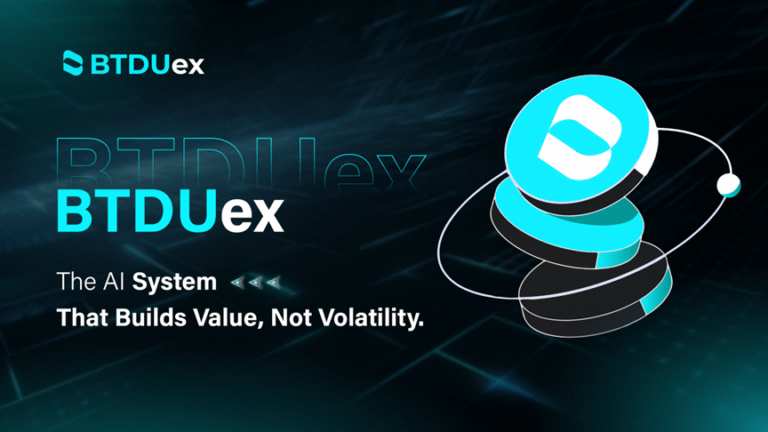Introduction
In the evolving world of decentralized finance (DeFi), one of the most significant innovations has been the introduction of automated market makers (AMMs). At the heart of this revolution is UniSwap, a decentralized exchange (DEX) that has reshaped how individuals trade cryptocurrencies without relying on traditional intermediaries. UniSwap’s innovative approach not only increases accessibility but also eliminates the need for centralized order books. By using mathematical formulas, liquidity pools, and smart contracts, UniSwap has created a seamless, transparent, and permissionless way of exchanging digital assets.
What is UniSwap?
UniSwap is a decentralized exchange protocol built on the Ethereum blockchain. Unlike centralized exchanges where buyers and sellers are matched via order books, UniSwap uses liquidity pools to facilitate trades. These pools are collections of funds locked into smart contracts by liquidity providers, who in turn earn fees from trades that occur within the pool. By operating on Ethereum, UniSwap leverages the security and decentralization of the network while enabling a wide range of ERC-20 token swaps.
The Core Concept of Automated Market Making
At the center of UniSwap lies the concept of automated market making. Traditional exchanges rely on supply and demand dynamics visible in an order book, where traders set buy and sell prices. In contrast, UniSwap replaces order books with a mathematical formula that determines the price of assets based on their ratio within the liquidity pool. This formula is expressed as:
x * y = k
Where:
- x = Quantity of token A
- y = Quantity of token B
- k = A constant that must remain unchanged
This constant product formula ensures that the product of the two token quantities remains consistent even after trades. As a result, whenever one asset is bought, its relative scarcity increases, which pushes up its price, while the other token’s price decreases accordingly. This self-balancing mechanism keeps liquidity available at all times.
How Liquidity Pools Work
Liquidity pools are the backbone of UniSwap. Instead of relying on market makers to post buy and sell orders, liquidity is provided by users who deposit an equal value of two tokens into a pool. For example, a user might contribute ETH and USDC in equal dollar amounts to a pool. Once deposited, liquidity providers receive liquidity tokens that represent their share of the pool.
Every time a swap occurs within that pool, a small fee (commonly 0.3%) is distributed proportionally among liquidity providers. This incentivizes users to provide liquidity while ensuring that the system remains decentralized. The model allows even small investors to act as market makers and earn passive income, something that was once limited to large institutions.
The Role of Arbitrage in UniSwap
Arbitrage plays an essential role in ensuring that UniSwap maintains fair pricing across the broader market. Since the price of tokens in UniSwap pools is determined by the ratio of assets rather than external price feeds, discrepancies may arise compared to centralized exchanges or other DEXs. Arbitrage traders quickly identify these price differences and execute trades to capture profit.
For example, if the price of ETH on UniSwap is lower than on a centralized exchange, arbitrage traders will buy ETH from UniSwap and sell it elsewhere until prices align. This continuous arbitrage process helps UniSwap pools stay in balance and reflect accurate market valuations without relying on a centralized authority.
Versions of UniSwap and Their Improvements
Since its inception, UniSwap has gone through several iterations, each improving functionality and efficiency.
UniSwap V1
The initial version allowed direct ERC-20 to ETH swaps. While revolutionary, it was somewhat limited since it required ETH as an intermediary for trading between ERC-20 tokens.
UniSwap V2
This version eliminated the ETH requirement, allowing ERC-20 to ERC-20 swaps directly. It also introduced significant improvements in security and functionality, including price oracles that enabled more accurate external data use.
UniSwap V3
UniSwap V3 introduced concentrated liquidity, a feature that allows liquidity providers to allocate funds within specific price ranges. This drastically improved capital efficiency, as providers could focus liquidity where trades were most likely to occur. It also introduced multiple fee tiers, giving providers greater flexibility in managing risk and returns.
Advantages of UniSwap
There are several reasons why UniSwap has become a cornerstone of decentralized finance:
- Decentralization: Users maintain control of their funds and trade directly from their wallets.
- Accessibility: Anyone with an Ethereum wallet can participate without KYC or approval.
- Liquidity Provider Incentives: Individuals can earn passive income by contributing to pools.
- Transparency: Smart contracts ensure that all operations are visible and verifiable on-chain.
- Permissionless Nature: Developers and token creators can easily list new tokens without intermediaries.
Challenges and Risks of UniSwap
While UniSwap has many strengths, it also faces notable challenges:
- Impermanent Loss: Liquidity providers may face losses compared to simply holding assets if the price of tokens shifts significantly.
- Gas Fees: Operating on Ethereum means high transaction fees during network congestion.
- Slippage: Large trades can shift pool ratios significantly, leading to less favorable prices for traders.
- Smart Contract Risks: Although audited, smart contracts are not immune to bugs or vulnerabilities.
The Future of UniSwap and AMMs
UniSwap continues to push innovation within decentralized finance. With the growing adoption of layer-2 scaling solutions such as Optimism and Arbitrum, users are experiencing lower fees and faster transactions. Furthermore, the potential integration with cross-chain solutions could expand UniSwap beyond Ethereum, creating an even broader network of decentralized liquidity.
As DeFi matures, UniSwap is likely to remain a central figure. Its role in pioneering automated market making has already reshaped global finance by eliminating middlemen, empowering individuals, and proving that decentralized systems can function efficiently on a large scale.
Conclusion
UniSwap represents a paradigm shift in how people trade digital assets. By replacing traditional order books with liquidity pools and automated market making, it has opened new opportunities for traders and liquidity providers alike. Its mathematical foundation ensures continuous liquidity, while its decentralized nature promotes fairness, transparency, and accessibility. Though challenges such as impermanent loss and gas fees remain, ongoing developments promise to address these issues and enhance the user experience.


















